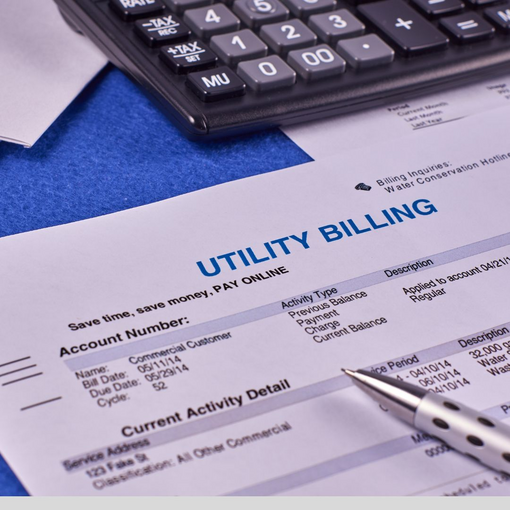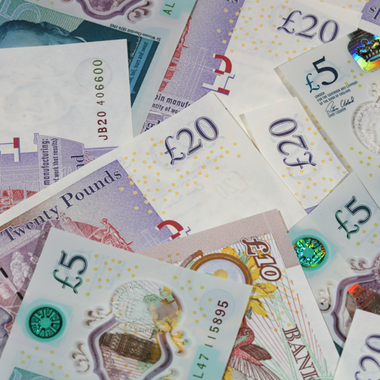
- Six minutes read
Why providers of essential services should enable bill payments with eCash
The growth of cashless payments is making it harder for cash-reliant consumers to pay for essentials like utilities, healthcare, and even government services. eCash can make these services more accessible and inclusive, while cutting costs for providers.
When Chandigarh, a city in northern India, banned cash from sampark centers — where citizens pay their utility bills and property taxes — it did so with the best of intentions.
The initiative was part of the Indian government's Digital India campaign, a policy aimed at speeding up digitalization across the country.
But while digital payment adoption across India has increased, the drive to eliminate cash payments has also become an object lesson in the risks cashlessness presents to the most vulnerable in society.
For the 190 million Indians who don't have access to a bank account, not being able to use cash means it's becoming next to impossible to pay for electricity, gas, and other essential services.
The cash penalty
Unlike India, authorities in the US, EU, and UK are taking steps to protect access to cash rather than banning it.
In the US, several cities, regional authorities, and states have enacted pro-cash laws, and a bill currently in front of congress would enshrine consumers' right to pay in cash into federal law.
And while the EU and UK have stopped short of legally obliging merchants to accept cash payments, the European Central Bank, the European Commission, and the UK government have all committed to ensuring consumers can continue having access to it.
But if, on paper, US, EU, and UK consumers' ability to pay in cash is protected — or, at least, the importance of them being able to do so has been formally acknowledged — it's a different story in practice.
In the US, for instance, 76% of healthcare providers prefer receiving payment electronically. So, even when they haven’t gone cashless, many providers’ payment systems are often designed to discourage cash payments.
Similarly, in the UK and EU, many providers of essential services are either going cashless or taking steps to make cash payments less appealing.
For example, paying for gas and electricity in cash adds £100 a year (around $111 a year) in fees and charges to the average UK utility bill. Gas and electricity tariffs that enable you to pay in cash are also typically more expensive, with the cheapest deals only available if you pay by direct debit.
A number of EU countries also have per transaction cash limits. In France, for instance, you can't pay local taxes, fees, or fines in cash if the amount is €300 (around $293) or more.
These practical restrictions mean 5.9 million Americans, 13 million Europeans, and 1.3 million Brits who depend on cash are at risk of finding themselves in a deepening cycle of exclusion and hardship.
At worst, cashless payments prevent them from accessing critical services they need to improve their lives. But, even when cash payments are accepted, they often have a financial penalty attached. And when you’re living paycheck to paycheck, every cent counts.
The benefits of cash payments: a service provider's perspective
Higher tariffs and fees on cash payments are normally justified as necessary to cover "additional processing costs".
Similarly, countries that have instituted per transaction cash limits typically argue they're necessary to prevent fraud, while cashless payments are presented as the safer, more secure, more convenient alternative.
What these arguments often overlook is that not accepting cash also has risks and costs.
Leaving aside the moral imperative — the most vulnerable in society shouldn't be excluded because they can't open a bank account— making it difficult for significant numbers of people to pay for essential services means lost revenue and higher operational overhead.
Case in point, Americans who are on low incomes and, so, are heavily reliant on cash are more likely to have medical debt.
As RentMoola's chief product officer Jean-François Brissot observes, "When you're living paycheck to paycheck, one day matters... You can't afford to send money in advance to make sure it arrives on time... You have to make the payment at the last minute, when you receive your salary or cash your check."
So, if healthcare providers made it easier to pay in cash, they could increase the likelihood of being paid on time and avoid having to resort to expensive debt collection proceedings as often.
The same goes for other service providers — from utilities, to insurance, rent, and loans. Here again, being able to pay with cash can give cash-reliant consumers more flexibility, making it easier for them to pay their bills on time and unnecessary for providers to take drastic (and costly) steps such as cutting service or sending in debt collectors
Crucially, unlike digital payments, there's no risk of transactions being declined because of technical glitches. Cash is often the fall-back option when other payment methods fail. So, if anything, by accepting cash, providers of essential services like utilities and healthcare can make it easier to get paid on time even by customers who are able to use cashless payment methods.
Making essential services more inclusive, with eCash
While there's no stopping digitalization, this doesn't mean excluding those who depend on cash has to be inevitable. With eCash, cash-reliant consumers and providers of essential services can get the best of both worlds.
When the consumer is ready to pay, they can take their bill to a participating payment point, scan the barcode or QR code embedded on the bill, and hand over cash. It's simple, straightforward, and convenient, even if the consumer doesn't have access to a bank account or isn't digitally savvy.
The service provider is also notified as soon as the transaction is complete, so the consumer can stretch their paycheck for as long as possible without risking their account being put in default — or, in the case of a utility bill or phone bill, having their service interrupted.
From a service provider's perspective, adding eCash to the payments mix is as simple as printing a barcode or QR code onto a bill. Crucially, there's no need to increase the physical footprint, because consumers use a network of already established bricks-and-mortar stores. And, because payment is made in cash, there's no risk of defaults or chargebacks.
It's not true progress, if people are left behind
Between now and 2025, the volume of cashless payments globally is expected to rise by 80%. But while this won't be an issue for those of us who prefer to go cashless, we can't forget about those who don't have the luxury of making this choice.
As cashlessness becomes ever more ubiquitous, the associated dangers will also increase. More and more, being cash-reliant means being unable to get healthcare, light and heat (or cool) your home, and access many other services most of us take for granted.
With millions of people turning to cash to better control their spending in the tough economic climate, the conversation around financial inclusion in the digital age is more pressing and relevant than ever.
With eCash, hospitals, utility companies, and other essential service providers can help ensure that people who are going through challenging times don't fall through the cracks.




